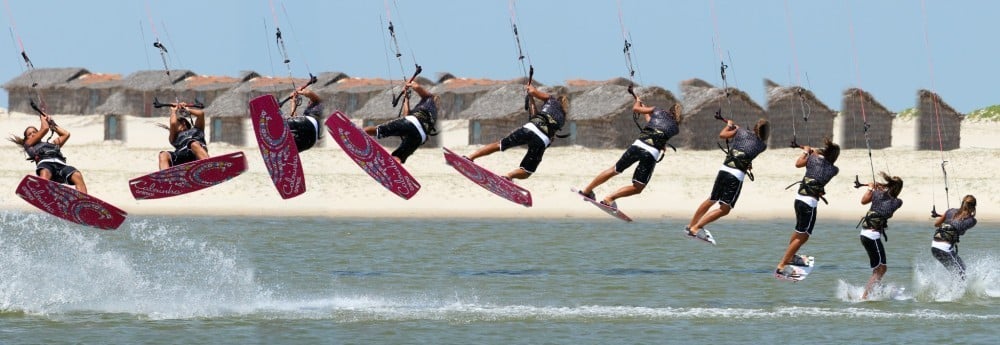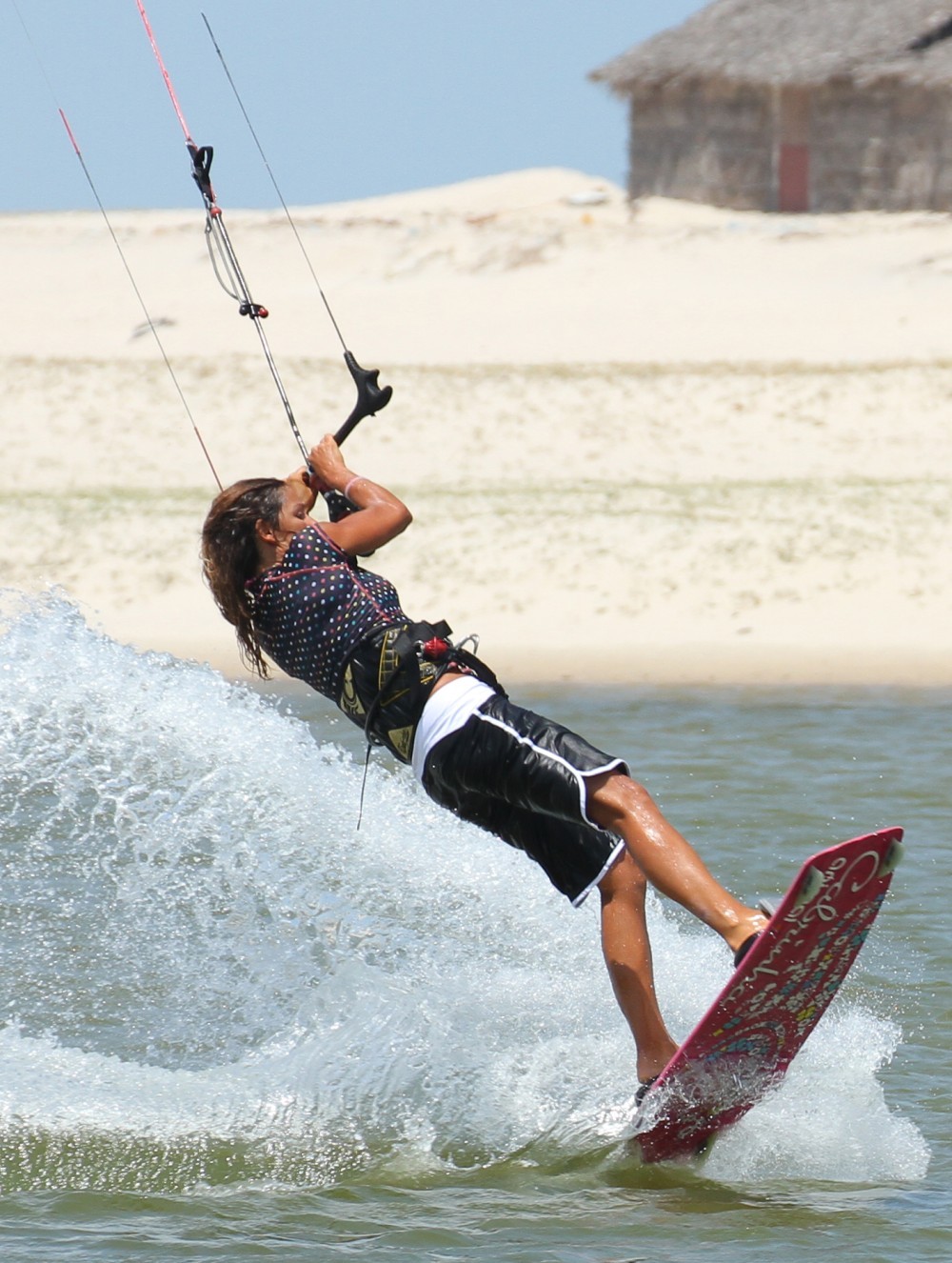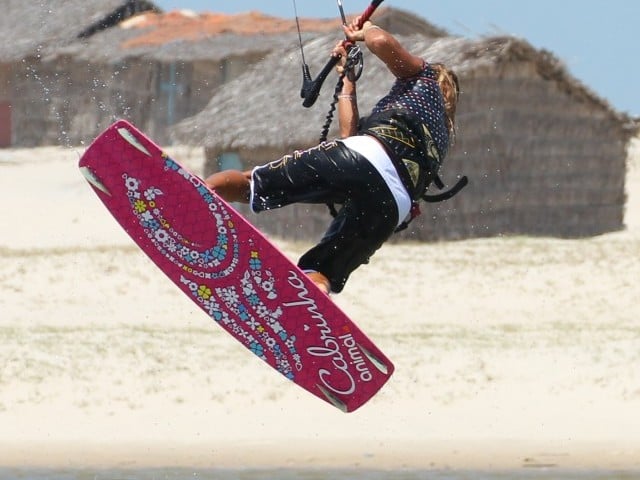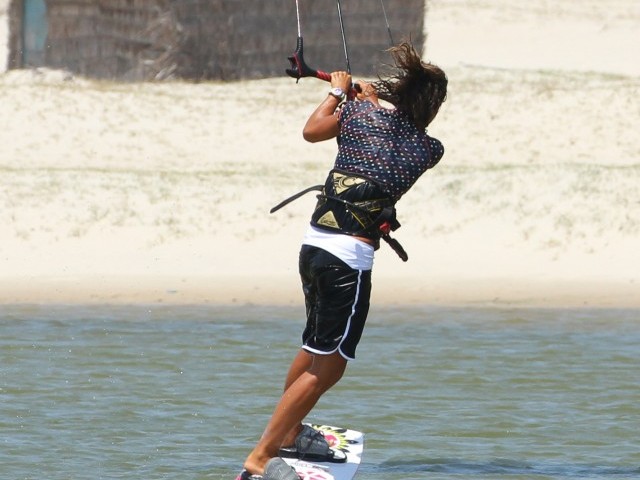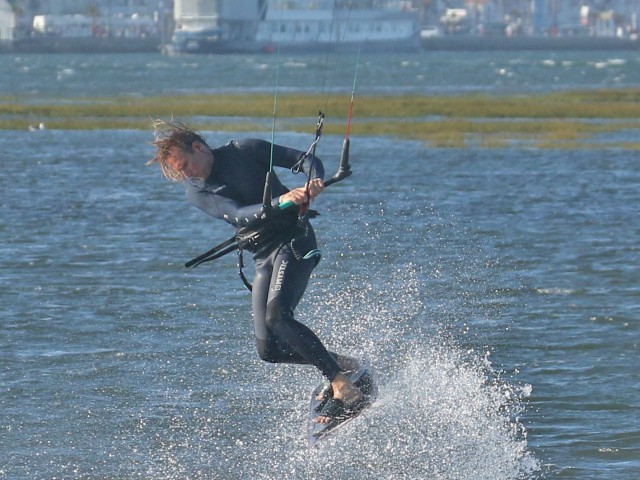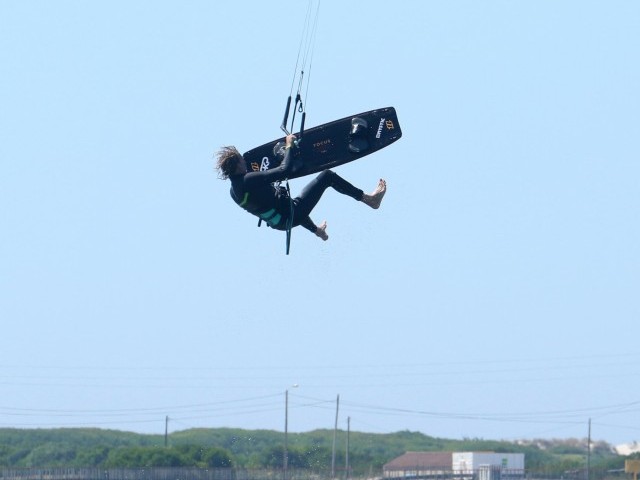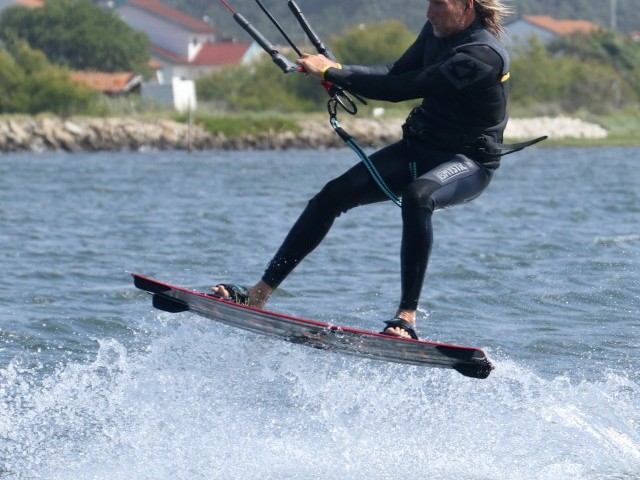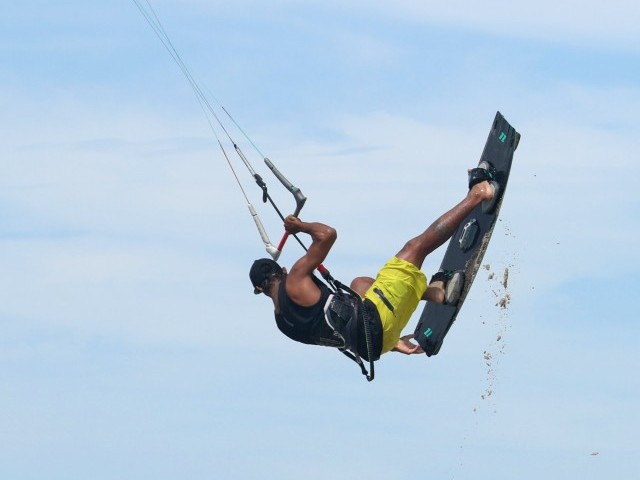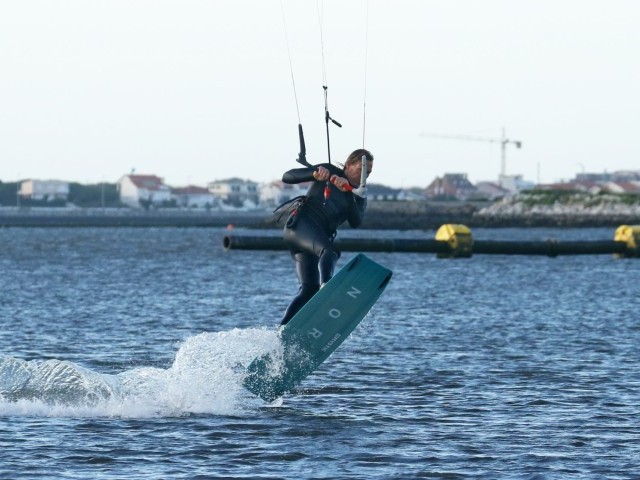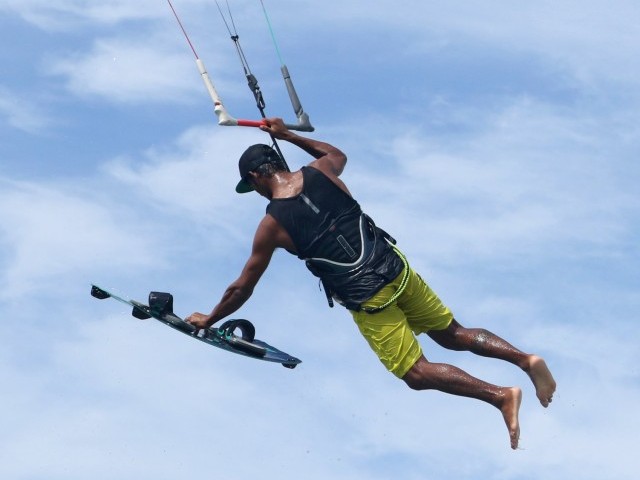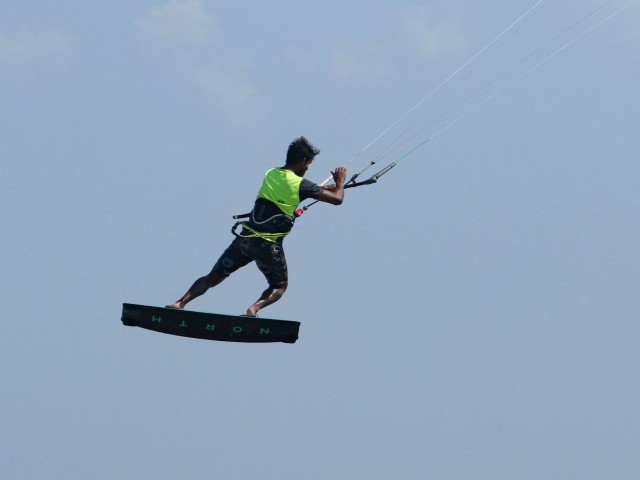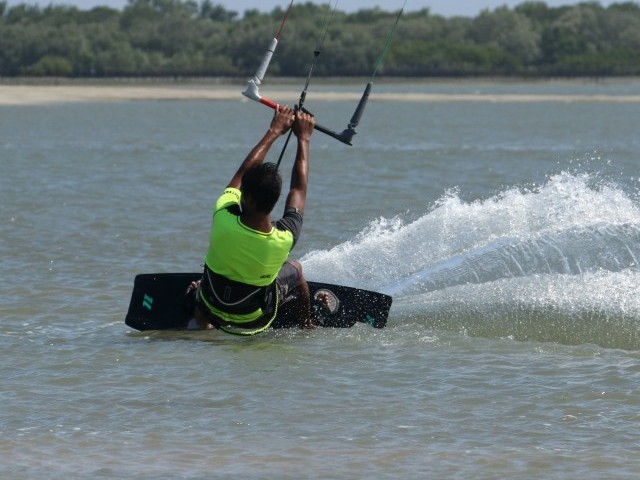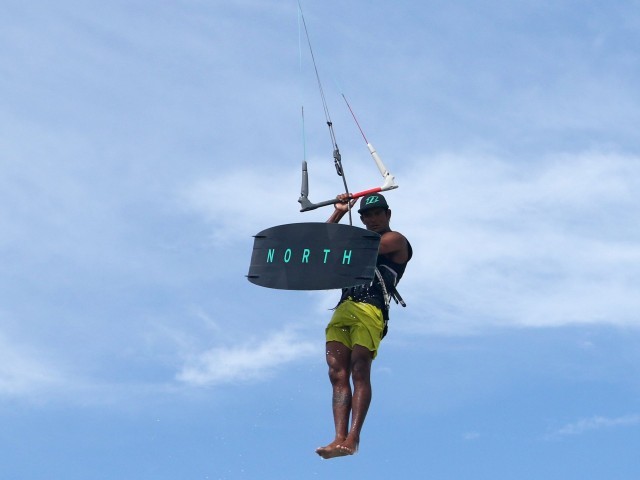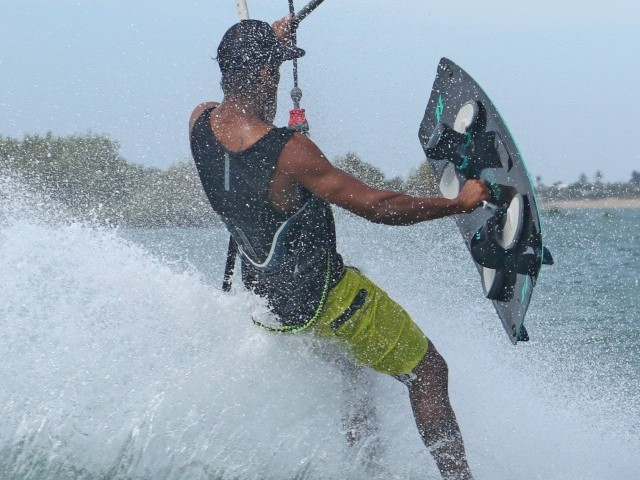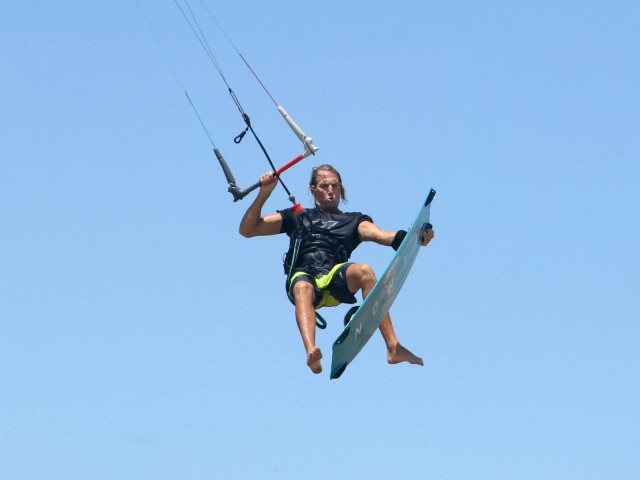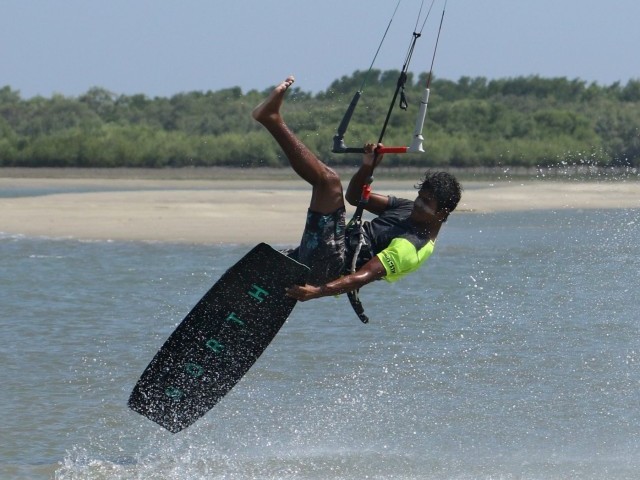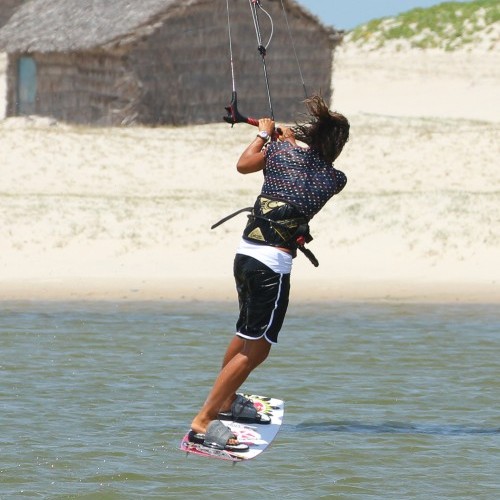
Unhooked Back Loop to Toeside
Technique / Advanced
Introduction
This one will always feel good done well, and is of course the first step in many a budding freestyler’s repertoire to a plethora of pass moves. Technically it is just an unhooked version of the same move hooked in, so assuming that you can execute a popped back to toe side and already stomp unhooked raleys and understand kite trim, you’ll just need to concentrate on controlling the kite whilst using skills you already have.
That said we’ll quickly refresh on what’ll make the difference.
The Approach and Take Off
Karine is lifting off and even though this is a pop trick and you’ll not be sending the kite, you can still position it high enough to get some float and assist you around, so forget this 45 degree nonsense and park it about 11 or 1. However being a back loop, it will be very easy to accidentally lean on the back hand as you lean back into the rotation so think about steering the kite down with your front hand as you take off. Throughout this move Karine will aim to keep her hands in close, tucking her elbows into her sides. This way she’ll have control over her rotation and the kite.
To make sure she can get the lusted after up pop, Karine pushed the board well off the wind before starting her carve upwind. She did this by dropping all her weight back over the tail of the board, softening her back leg and moving her hips back, whilst pushing the nose of the board away from her. The further you go off the wind, the more time you can carve into the rotation but still give yourself the chance to pop up off the water before the board has turned too far into the wind and your back leg does nothing more than spin you manically. Also if you start off the wind, you’ll land off the wind, which should help prevent you from over rotating.
Keeping it all Together
This picture shows the real effort involved in controlling both your rotation and the kite. As you’d expect, having popped up into the move by extending, Karine starts her rotation stretched out. To get a controlled turn to toe side during her back loop, as opposed to rotating to toe side, Karine needs to get her knees up closer to the bar, and she needs to keep the kite moving forward and not drifting up. You can see that in a very short time between the two images, Karine pulls her knees up towards her hands and throws her head and front shoulder down and around so that she can see the water. As a result it is much simpler for her to now lean on her front hand and keep the kite where it should be. With the board up close, her head and shoulders leading the rotation Karine will not spin uncontrollably, but rotate towards where she is looking – in front of her but also downwind.
Finishing the Back Loop
Now as Karine finishes her back loop she can dive the kite a bit with her front hand. This will pull her more downwind, which in turn will pull her out of her rotation and stop her over rotating. With her head and shoulders turned down and the board up due to her knees be pulled up Karine is in the perfect position to bring her back knee through to toe side. This should all be as per the hooked in version, but here you have no option to let go with your front hand.
The Landing
Karine has pulled her knee through, which has brought the board around to toe side and as she drops down she has extended her legs ready for landing. You can see that her arms are still bent and thus the bar is close to her body. This allows her to keep her weight over the board and land balanced. If Karine had extended her arms her weight would drift downwind of the board and she’d get pulled over on landing. You can also see that the kite has dived down, so she’ll land with speed and pull in the kite. You need this as if not when you land down wind towards the kite you’ll be chasing a still kite, rather than a moving one, so it’ll be much harder to get tension back on the lines. Finally you can see that Karine has not twisted around to face upwind, she’s looking downwind, the way she wants to land.
Top Tips
Only two to really focus on! Firstly remember that this is a back loop, which you then land toe side, not one and a half back loops. As long as you get a decent pop up, make yourself small and roll around with your head and shoulders you’ll have plenty of time to bring the back knee through for a toe side landing.
Secondly make sure you are keeping the kite down. The best way to practice is with a standard unhooked back loop – less to think about. Once you’ve got the kite nailed go for the toe side. This will also stop you trying to spin and encourage you to add the toe side landing.
Now let’s have a gander at Sequence 1. For the approach and take off.
- Pic 1. With her kite parked at 1 o’clock, her hands centred and her weight back, Karine has bent her back leg, flattened the board, pushed the nose off the wind and unhooked.
- Pic 2. Keeping her front leg straight Karine turns her head and shoulders upwind.
- Pic 3. Dropping her hips and shoulders back Karine carves her board back up into wind.
- Pic 4. As she drives the board onto its edge Karine locks her back leg to resist the kite and keeps her weight on both hands to stop the kite drifting up.
- Pic 5. As the board turns up into the wind the kite begins to pull Karine over the board.
- Pic 6. So Karine explodes up of her back foot by kicking down against the edge.
- Pic 7. As her back leg extends Karine keeps her hands in close and her head looking forward through her arms.
- Pic 8. Karine is now airborne, rotating and extended…
Sequence 2. For the rotation and toe side landing.
- Pic 1. As we left her, Karine is extended and rotating into her back loop, with her arms bent and her hands in close.
- Pic 2. Karine brings her hands towards her hips and her knees up towards her hands.
- Pic 3. Karine rolls her leading shoulder and head around, which also lets her lean on her front hand to bring the kite a bit lower.
- Pic 4. As Karine comes around she spots her landing and pulls her back knee through to initiate the turn to toe side.
- Pic 5. With the board coming through Karine now pulls on her front hand to dive the kite.
- Pic 6. The pull from the kite should slow Karine’s rotation and steer her downwind. Karine keeps her arms in
- Pics 7 & 8. As she drops Karine extends her legs, but keeps her hands in close, and focuses on where she’ll be landing, looking forwards towards that point.
- Pic 9. This way Karine lands balanced over the board.
- Pic 10. Karine absorbs the landing, stands up, hooks back in and claims it….
Common Problems
Firstly the kite going up is a classic when learning any unhooked move as when you carve the weight will always shift onto your back hand. In this move a high kite will make you over-rotate and you won’t have any forward speed to land with. To combat this try and keep the front elbow in close as you drop your weight to edge, and if this doesn’t help actually steer the kite down as you carve.
Secondly you may well land but keep falling in downwind of your board. This is because you’ve let your arms extend, and or the kite has drifted up. So keep the arms in, look downwind, and make sure you dive the kite to pull you out and down.
Keystones
- Bear off the wind loads
- Straight front leg
- Arms in, keep kite down
- Pop up before you turn through wind
- Turn to toe side and dive
This technique article was in Issue 32 of IKSURFMAG.
Related
By Christian and Karine
Christian and Karine have been working together as a coaching team, running improver to advanced kitesurfing clinics since 2003.







